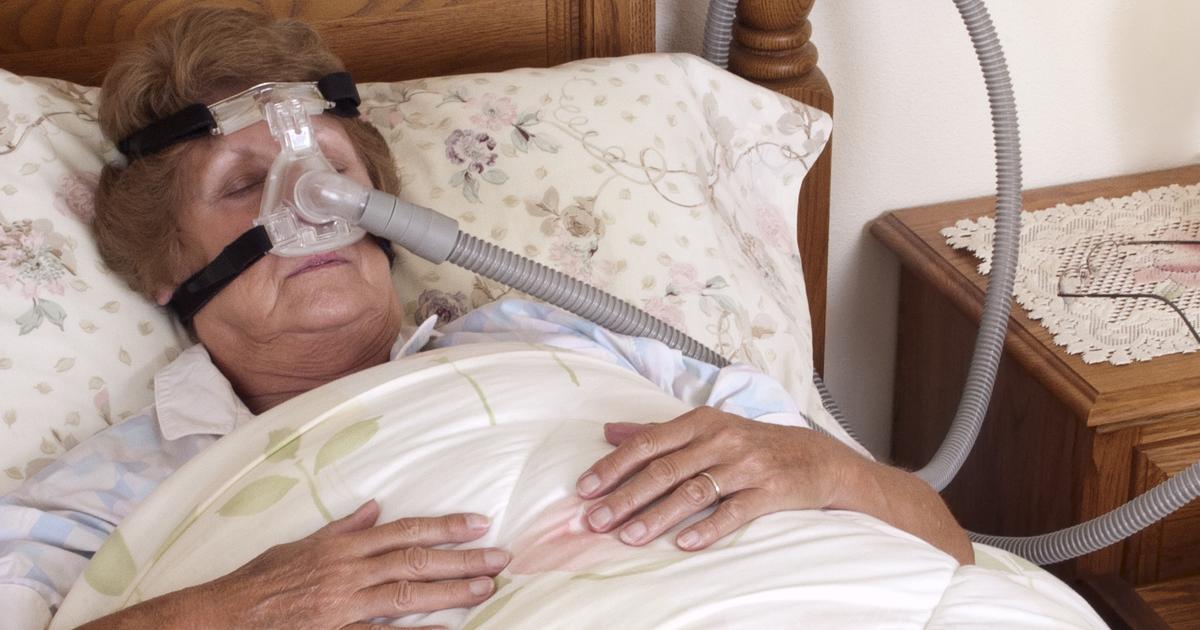10 Surprising Reasons Your Nose Is Secretly Throwing a Polyp Party
Nasal polyps, sometimes called nasal polyposis, are soft, benign (non-cancerous) growths that form on the lining of the nasal passages. The polyps are typically caused by an inflammation of the sinuses or the mucosal lining of the nose itself. Small polyps may not cause any symptoms, though large polyps could block the nasal passages, and they may produce symptoms such as facial pain, a runny nose, breathing difficulties, snoring, and a distorted sense of taste or smell. Patients could also experience sneezing and headaches, and they might have frequent nosebleeds. To diagnose nasal polyps, doctors begin with a simple examination of the nose using a lighted instrument. A nasal endoscopy and CT scans or other imaging studies may be used to confirm the presence of polyps. Nasal corticosteroids or injectable corticosteroids can be used to shrink or eliminate polyps in this area, and patients may also be given an injection. If medications are ineffective, endoscopic surgery to remove the polyps may be considered. The conditions outlined below are recognized as causes, risk factors, and complications associated with nasal polyps.
1. Asthma

Asthma is a chronic condition in which the airways of the lungs become narrowed and swollen. Patients with asthma may experience wheezing, shortness of breath, chest pain, and coughing. Allergies, exercise, and exposure to certain chemicals could cause flare-ups for some patients, and the condition could make patients more likely to develop nasal polyps. To diagnose asthma, doctors begin by performing a physical examination. This primarily involves listening to the heart and lungs with a stethoscope, and it is performed to rule out other illnesses such as chronic obstructive pulmonary disease and respiratory infections. Patients might need to have spirometry or peak flow tests, and some individuals could be asked to have imaging studies or a nitric oxide test. Treatment methods for asthma typically consist of inhaled corticosteroids and other long-term control medicines. Patients are also given a rescue inhaler that contains short-acting beta antagonists or bronchodilators such as ipratropium. These medicines are designed to be used during flare-ups. Patients with asthma should keep a symptom journal, and they should always see a doctor if they experience any nosebleeds or other issues that could suggest the presence of nasal polyps. Polyps could make asthma symptoms worse.
2. Allergic Rhinitis

Also known as hay fever, allergic rhinitis occurs in patients who have allergies to substances such as pollen, dust mites, mold, or cat saliva. Individuals with allergic rhinitis typically experience sneezing, a runny nose, watery or itchy eyes, and fatigue. They may also develop hives, itchy skin, dark circles under the eyes, coughing, or a sore throat. Asthma, a known risk factor for nasal polyps, also increases the risk of having allergic rhinitis. Air pollution, cigarette smoke, fumes, and humidity can worsen this condition. Doctors perform a physical exam, a skin prick test, and a RAST blood test to diagnose allergic rhinitis. Treatment options include antihistamines, decongestants, nasal sprays, and immunotherapy (allergy shots or tablets).
3. Sensitivity To Anti-Inflammatory Medication

Patients with nasal polyps could also have a sensitivity to anti-inflammatory medication. In particular, doctors have identified acetylsalicylic acid as a major medication that causes this sensitivity in individuals with nasal polyps. For this reason, patients who know they have nasal polyps should always ask their specialist before taking any type of anti-inflammatory, including over-the-counter medications such as ibuprofen and naproxen. In addition, individuals who notice they have unusual symptoms after taking an anti-inflammatory may want to talk with their primary care doctor or an ear, nose, and throat specialist about having an examination to detect nasal polyps. If shortness of breath, facial swelling, or rapid heartbeat occur after taking medicine, patients should seek urgent medical treatment, as these may be signs of an allergic reaction.
4. Obstructive Sleep Apnea

Obstructive sleep apnea is a condition in which patients experience multiple pauses in their breathing during sleep. These pauses typically last at least ten seconds, and patients with this sleep disorder often notice daytime sleepiness, loud snoring, a dry mouth upon waking, morning headaches, and nighttime sweating. Individuals could also have elevated blood pressure, and depression and irritability are common. Asthma increases the risk of sleep apnea, and patients who have chronic nasal congestion, including that which is associated with nasal polyps, are also at an elevated risk of this form of apnea. In fact, obstructive sleep apnea is a potential complication of untreated nasal polyps. To diagnose sleep apnea, physicians will perform sleep studies at a specialized facility, and they will also check the patient's mouth, throat, and nose for the presence of extra tissue, polyps, or other abnormalities. Treatment options for this condition include positive airway pressure machines, mouthpieces, and surgery to remove tissue or stimulate the upper airways. Lifestyle changes such as weight loss, reduced alcohol consumption, and changes in sleeping position might be recommended as well.
5. Sinus Infections

Sinus infections occur when the tissue lining the sinuses becomes inflamed. Nasal polyps may trigger these infections, and they could also develop as a result of the common cold, allergic rhinitis, or a deviated septum. Patients with an acute sinus infection could experience coughing, congestion, facial pain, a runny nose, and a loss of their sense of smell. Fever, headaches, bad breath, and dental pain may be present too. Chronic sinus infection patients could have these symptoms for at least three months, and they may also notice pus in the nasal cavity. Mild infections might be treatable with over-the-counter decongestants. However, more serious infections and chronic infections will likely require treatment with antibiotics or steroids, and antihistamines might be necessary for some patients. To reduce pain and other symptoms, doctors may recommend patients use warm compresses and saline nasal drops or sprays at home. Individuals who have sinus infections will normally need to have follow-up appointments with their doctor.
6. Cystic Fibrosis (CF): The Genetic "VIP Pass" for Polyps

For some, particularly children and young adults, the "invitation" to a nasal polyp party is unfortunately written into their genetic code. Cystic Fibrosis, a hereditary condition affecting mucus and sweat glands, creates an environment where thick, sticky mucus clogs airways, including nasal passages. This chronic obstruction and inflammation make individuals with CF highly susceptible to developing nasal polyps, often at a younger age and with greater severity. Recognizing this link is crucial for early diagnosis and tailored management, as polyps can further complicate respiratory health in those already battling CF’s relentless challenges, making them truly unwelcome VIPs.
7. Allergic Fungal Rhinosinusitis (AFRS): When Fungi Crash the Party Hard

Imagine your immune system throwing an overly enthusiastic, inflammatory rave in response to common airborne fungi! That's essentially Allergic Fungal Rhinosinusitis (AFRS). In susceptible individuals, inhaled fungal spores trigger a vigorous allergic reaction within the sinuses. This leads to the production of thick, eosinophil-rich mucus (often described as 'allergic mucin' resembling peanut butter) and, frequently, extensive nasal polyp growth. AFRS is more than a simple sinus infection; it’s a specific immune hypersensitivity often requiring surgery to remove the dense mucus and polyps, followed by corticosteroids and sometimes anti-fungal therapies to keep these fungal crashers out.
8. The Sunshine Clue: Vitamin D Deficiency as a Sneaky Accomplice

Could a lack of sunshine be subtly encouraging your nasal polyps to set up camp? Emerging research is shining a light on Vitamin D deficiency as a potential sneaky accomplice in the development or worsening of chronic rhinosinusitis and nasal polyps. This essential vitamin plays a crucial role in immune regulation and taming inflammation. Lower levels may impair the body's ability to effectively manage nasal and sinus inflammation, potentially creating a more welcoming environment for those unwelcome polyp 'guests.' While more studies evolve, ensuring adequate Vitamin D, under medical guidance, might become an important supporting act in your nasal health strategy.
9. The Dental Connection: When Tooth Troubles Stir Up Sinus Drama

Surprisingly, sometimes the "guest list" for your nasal polyp party might get an unexpected RSVP from your mouth! Odontogenic sinusitis occurs when an infection or inflammation from an upper tooth—often due to an abscess, complicated root canal, or dental implant issues—spreads directly into the adjacent maxillary sinus. This can trigger chronic sinus inflammation, creating fertile ground for nasal polyp development, usually on that one side. It’s a crucial, sometimes overlooked, connection. If you have persistent one-sided sinus symptoms and polyps, your doctor or dentist might investigate a dental source, as treating the tooth is key to ending that particular sinus fiesta.
10. Beyond Sniffles: Profound Olfactory Loss as a Silent Thief

While a stuffy nose is annoying, imagine the world losing its vibrant tapestry of scents – the comforting aroma of coffee, the fresh scent of rain, or a loved one's signature perfume vanishing completely. Nasal polyps, by physically blocking odor molecules from reaching olfactory receptors or through chronic inflammation damaging these delicate nerves, can lead to a profound or even complete loss of smell (anosmia). This isn't just a minor inconvenience; it’s a significant complication that can deeply impact quality of life, safety (e.g., detecting smoke or spoiled food), and the simple joy of taste, often leaving individuals feeling quite isolated.
Ending the Nasal Polyp Party: Your Path to Clearer Breathing

So, there you have it – a deeper dive into the many surprising reasons your nose might be hosting an unwelcome 'polyp party.' From underlying conditions like asthma and cystic fibrosis to unexpected triggers such as fungal allergies, medication sensitivities, or even hidden dental issues, it's clear that these nasal nuisances have a complex guest list of causes and risk factors. And as we've seen, the complications, like obstructive sleep apnea or a profound loss of your precious sense of smell, can significantly impact your daily well-being. Understanding these intricate connections is your first powerful step to sending those persistent party crashers packing. If you suspect nasal polyps are disrupting your life with their unwelcome festivities, don't try to manage the 'velvet rope' alone. Consulting with your healthcare provider for an accurate diagnosis and a personalized treatment plan is absolutely key to clearing your passages, breathing easier, and finally, RSVPing 'no' to that stubborn polyp fiesta for good.
